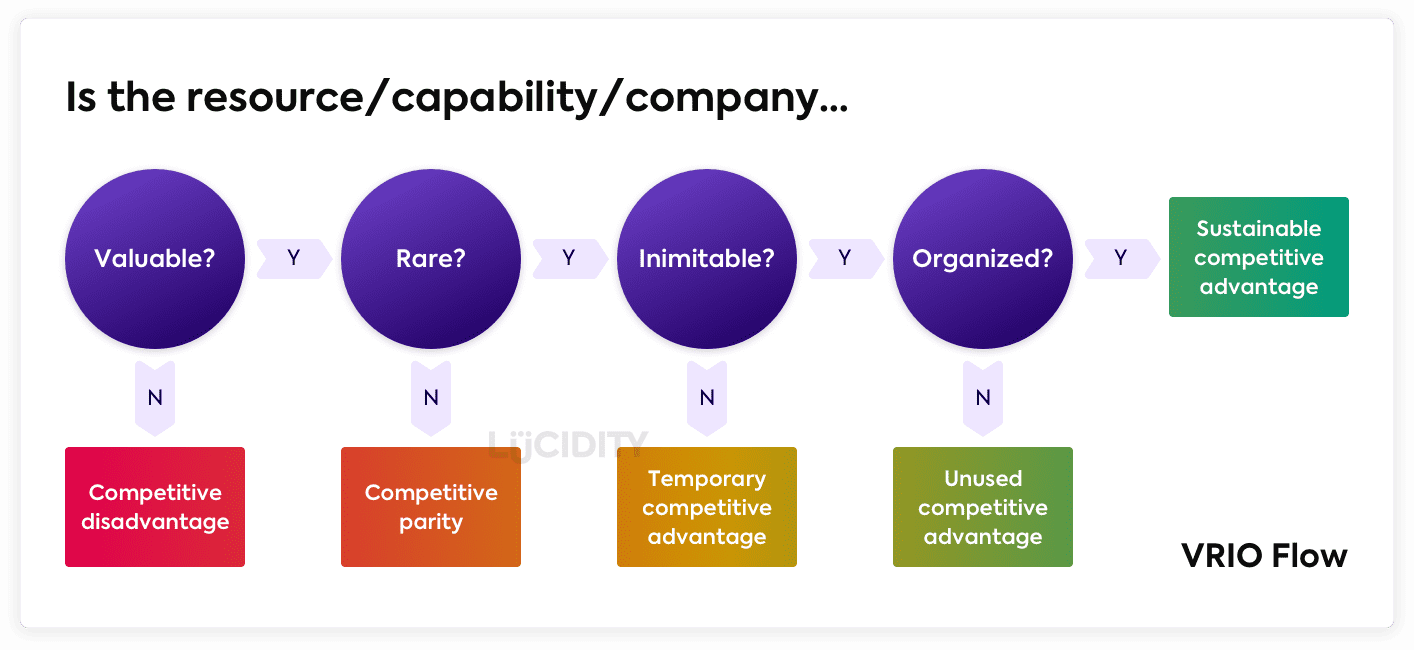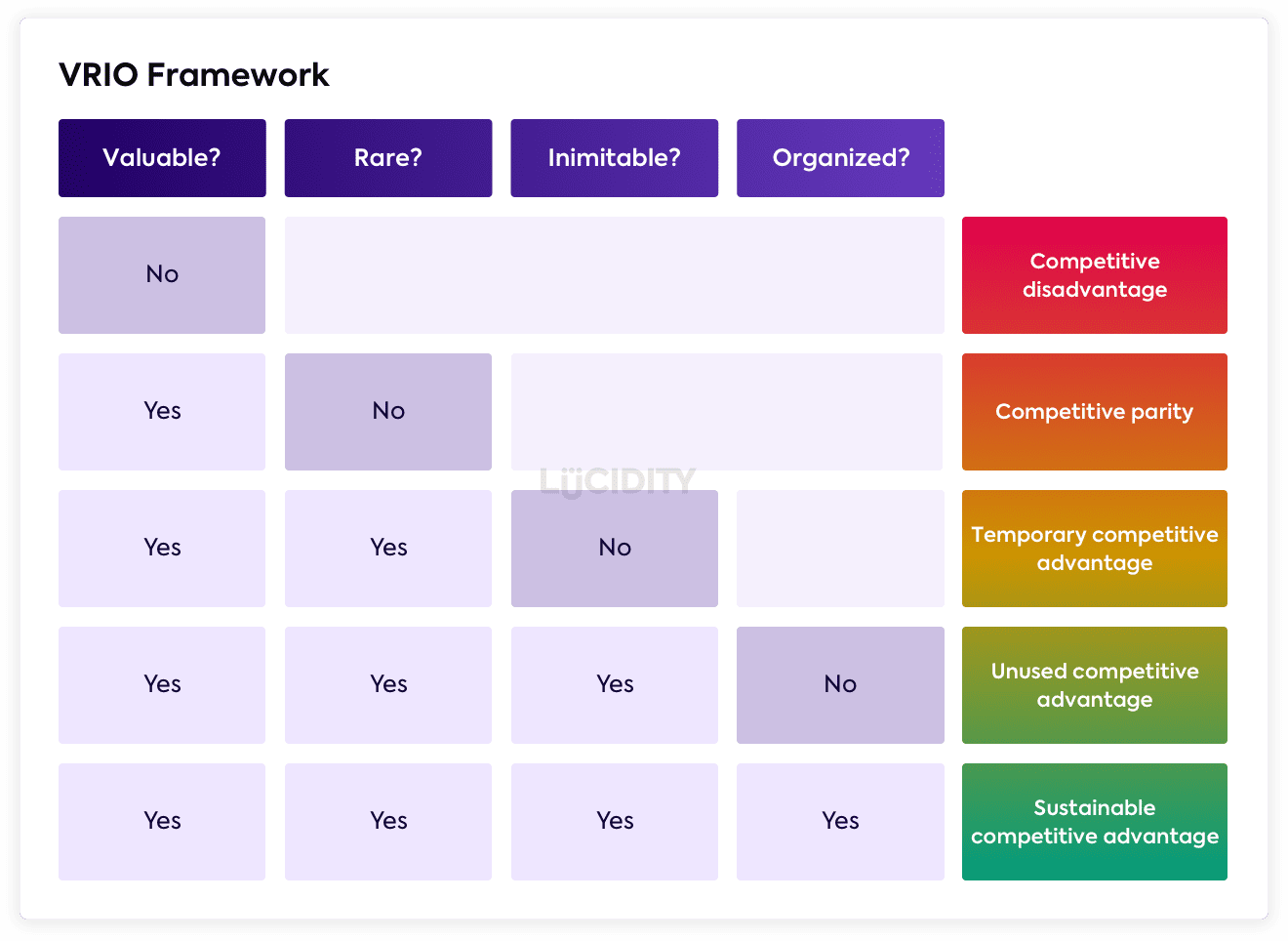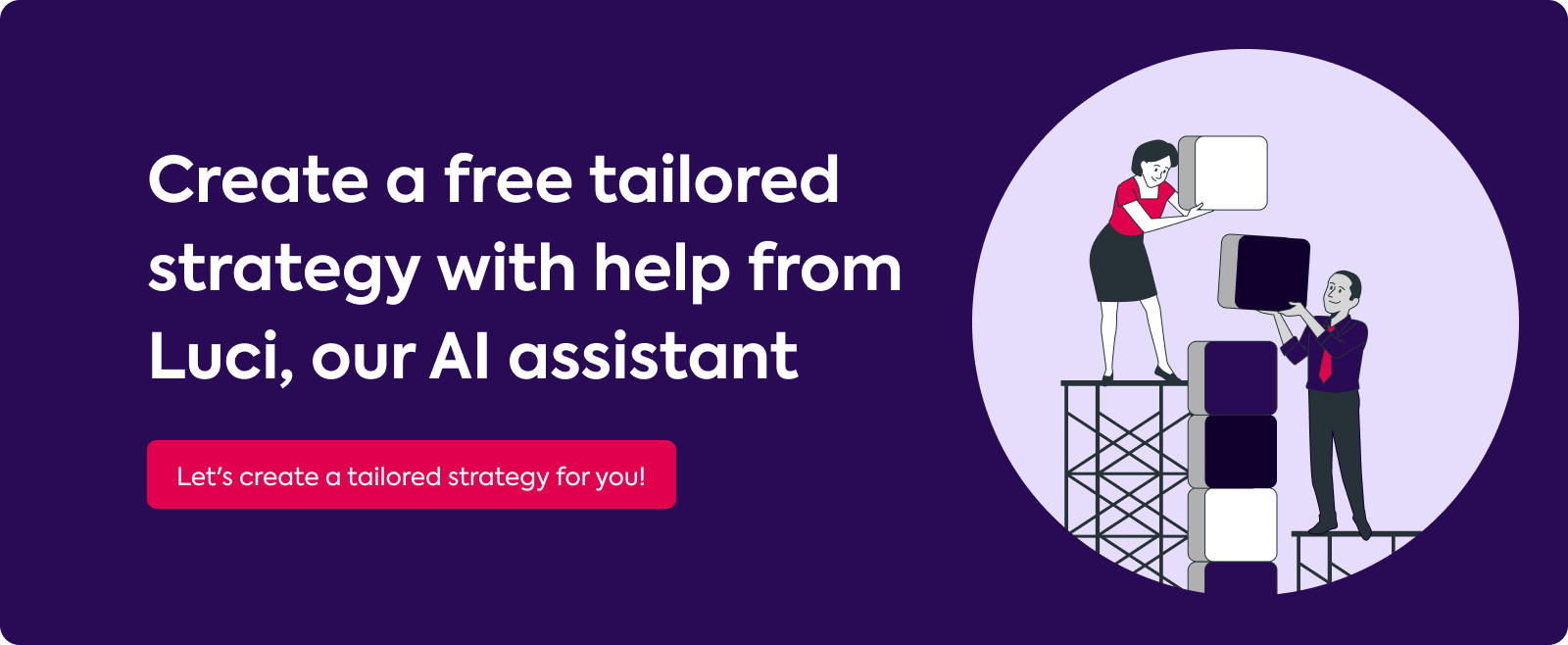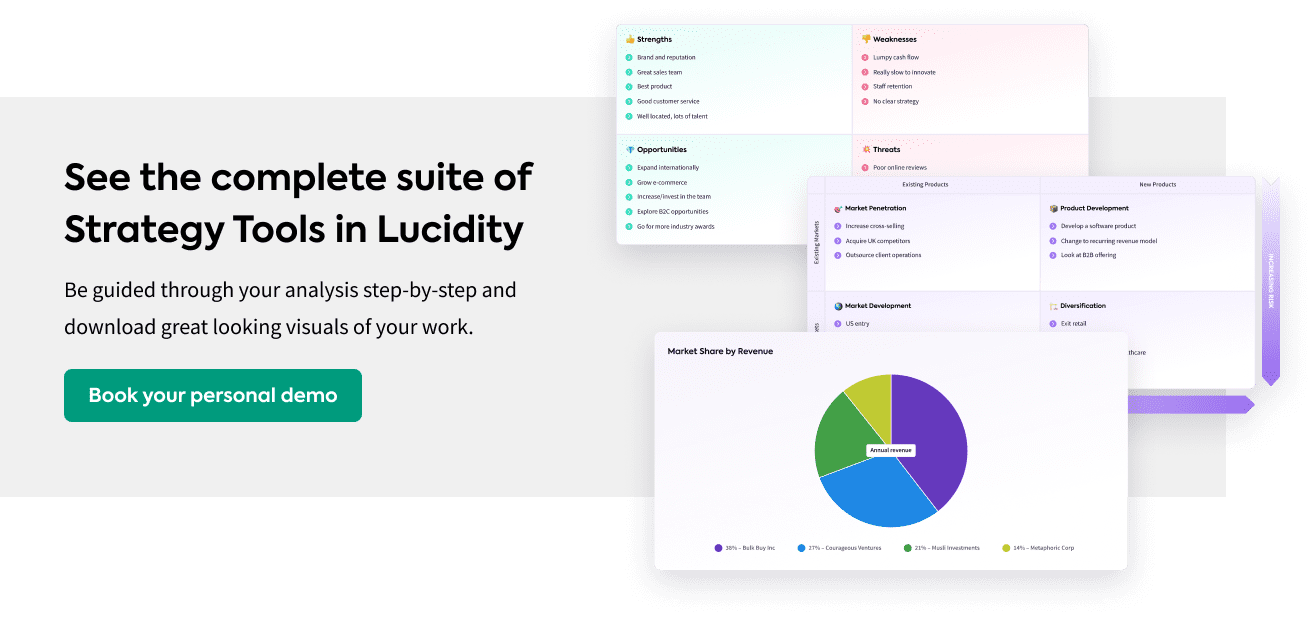The VRIO framework provides a basis to begin mapping out and understanding what resources make you successful and provide competitive advantage, which can be used as a guide in making decisions and setting priorities across the company.
What is the VRIO framework?
The VRIO framework is a tool to help you understand the elements of your business that give you a long-term competitive advantage. It might be resources or capabilities, partnerships or products, whatever gives or is going to give you an advantage can be framed within the VRIO framework.
VRIO stands for:
- Valuable
- Rarity
- Imitability
- Organized
Each Resource is judged against the above – remember though, if you don’t review your VRIO regularly then it may not be accurate as markets, customers, companies and conditions change.
Valuable
A resource is deemed as Valuable if it adds value to the company – either allowing it to take advantage of opportunities or mitigate the threats. Within a SWOT Analysis, Valuable resources may be mentioned under Strengths and relate to the Opportunities and Threats. It could be a particular feature that differentiates you, a department that performs well.
Rarity
A resource is judged on the rarity, which is often the easiest and least subjective part of VRIO. It can come down to simply if this resource is easily acquired by competitors, by yourself, or if it’s easy to replace completely.
Inimitable
If a resource can be imitated comes down to the how easily an organisation can substitute or copy out a resource. For example, you might be able to copy a particular feature in a product, or a particular marketing approach, but it’d be difficult to copy a brand or historic database of customer trends.
Organized
This area is around organizing the company to maximise the potential from the resource – is it generating the most it possibly can do for the business?
Each resource of the business can be mapped on those four categories by answering Yes or No. Depending on these answers, the result is a judgement of each resource as:
- Competitive Disadvantage
- Competitive Parity
- Temporary Competitive Advantage
- Unused Competitive Advantage
- Sustainable Competitive Advantage
Once complete, this document provides a clear list of what is your competitive advantage, and it helps you establish how you get enter or grow in certain markets.
Overall the framework can be used to help make your key strategic decisions. It should be used in conjunction with other tools but we’ll talk a little more on that later in this article.
How do you judge Valuable in the VRIO framework?
To judge if you see a Resource as Valuable in the VRIO framework you should ask the following questions:
- Does the resource add value for your customers?
- Does the resource result in you winning sales?
- Does it help take opportunities or remove threats from your SWOT?
How do you judge Rarity in the VRIO framework?
Rarity focuses on how difficult a resource is to replicate or obtain. In judging this you should consider:
- How did you obtain the resource?
- How easy is it to replicate?
- Is there alternatives on offer to the resource?
How do you judge Imitability in the VRIO framework?
Imitability comes down to how costly it would be to replicate the resource you’re profiling. It can help to think as a competitor, considering…
- What is your cost of the resource?
- How expensive is it to replace?
- Is it easily understood in order to replace?
Resources tend to be harder to imitate if:
- They are built up over time (eg data on particular subjects, brand equity)
- It’s hard to identify the resource externally from the environment
- It’s a person or team
How do you judge Organized in the VRIO framework?
Another way to think of Organized in VRIO is if you are getting the most from the resource. Sometimes the O in VRIO can feel a bit out of place, as it focuses on process and structure, but these elements are an important part of using your resource. Consider the following:
- Is there a management system in place for the resource?
- How do you measure the output of it?
- Is there a benchmark, either internally or externally, to compare?
What are the advantages of the VRIO framework?
There are a lot of advantages to the VRIO framework including:
- It’s simple and effective as a resource review
- When done well it can elevate a companies competitive positioning
- It’s comprehensive while not being complicated
- It’s very focused on internal analysis
What are the limitations of the VRIO framework?
As with every framework, VRIO has some limitations including:
- It can be time consuming
- It relies on a lot of subjective judgement
- It’s focused solely on internal analysis so needs other frameworks
How often should the VRIO framework be updated?
VRIO frameworks are useful whenever doing a comprehensive resource review, often conducted annually.
Who invented the VRIO framework?
Jay B Barney invented the VRIO framework in 1991, evolving a similar concept called VRIN.
What other frameworks should be used with VRIO?
The VRIO framework works well with Five Forces, SOAR and Ansoff.















